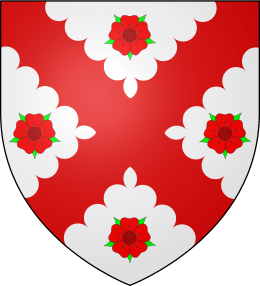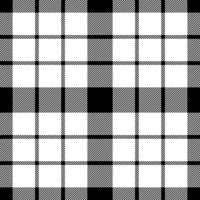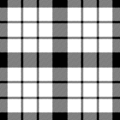Clan MacFarlane facts for kids
Quick facts for kids Clan MacFarlane |
|||
|---|---|---|---|
| Clann Phàrlain | |||
| Motto | This I'll defend | ||
| War cry | Loch Slòigh ("The Loch of the Host") | ||
| Profile | |||
| Region | Highland | ||
| District | Argyll | ||
| Pipe music | The MacFarlane's Gathering, Thogail nam Bó | ||
 |
|||
| Clan MacFarlane has no chief, and is an armigerous clan | |||
| Chief (Mac a' Bhàirling or MacPhàrlain) | |||
| Historic seat | Arrochar | ||
| Last Chief | William MacFarlane, 20th Clan Chief | ||
| Died | 1866 | ||
|
|||
|
|||
|
|||

Clan MacFarlane (Scottish Gaelic: Clann Phàrlain) is a historic Scottish clan from the Scottish highlands. This clan's story begins with the ancient Earls of Lennox. The MacFarlanes lived along the western shore of Loch Lomond, starting from Tarbet. Their famous war cry, "Loch Slòigh" (meaning "The Loch of the Host"), came from a small lake called Loch Sloy near Ben Vorlich.
The MacFarlanes were known for their daring night-time cattle raids on nearby clan lands, especially those of Clan Colquhoun. Because of this, a full moon was often called "MacFarlane's Lantern" in the local area! The clan's original lands were owned by their chiefs for many centuries. However, these lands were eventually sold in 1767 due to debts. Since 1866, there hasn't been a recognized chief for Clan MacFarlane. This means the clan is currently considered an Armigerous clan, which is a clan without a current leader.
Contents
Clan MacFarlane: A Look at Its History
Where Did Clan MacFarlane Come From?
Clan MacFarlane traces its roots back to the first Earls of Lennox. The exact origins of these earls are a bit unclear and have been debated by historians. Some believe they came from an Anglo-Saxon chief named Arkil, who fled to Scotland. Others suggest they might have been of Gaelic descent. It's possible that both ideas are true, as the area was a mix of different groups long ago.
The MacFarlanes claim their family line comes from Gille Chriosd, who was the brother of Maol Domhnaich, an early Earl of Lennox. Gille Chriosd was given the lands of Arrochar, which the MacFarlanes held for hundreds of years. Gille Chriosd's grandson was named Parlan (or Bartholomew), and the clan got its name from him. Maolchaluim Mac Pharlain, Parlan's son, was confirmed as the owner of Arrochar and other lands. Because of this, Maolchaluim is often seen as the true founder of the clan.
Supporting the Stewart Earls of Lennox

The ancient line of the Earls of Lennox ended in 1425 when Donnchadh, Earl of Lennox, was executed. After his death, the MacFarlanes tried to claim the earldom for themselves. This attempt led to big problems, and the chief's family faced great danger. The clan might have been destroyed if not for Anndra MacFarlane. He married Barbara, the daughter of John Stewart, who became the Earl of Lennox in 1488.
From this time on, the clan strongly supported the Stewart Earls of Lennox. For several generations, the MacFarlanes were loyal to them, and not much is recorded about their specific actions during this period.
The Battle of Glasgow Muir
In the mid-1500s, Donnchadh Mac Pharlain was a strong supporter of Matthew Stewart, the 4th Earl of Lennox. In 1544, Mac Pharlain led 300 of his men to join Lennox and Glencairn at the Battle of Glasgow Muir. They were just barely defeated in this fight. The MacFarlanes faced consequences, but their powerful friends helped them keep their lands.
After this defeat, the Earl of Lennox had to escape to England. He later returned to Scotland with a large army from the English king. The MacFarlane chief didn't join personally, but he sent a relative, Bhaltar MacFarlane of Tarbet, with 400 men to help the Earl. These MacFarlane clansmen were excellent light troops and guides for the Earl's main force. A historian from that time described them as "light footmen very well armed... with bows and two-handed swords."
The Battle of Pinkie Cleugh
In 1547, the clan suffered a great loss at the Battle of Pinkie Cleugh. Their chief, Duncan, and many of his men were killed. Later, in 1568, the clan, led by Duncan's son Andrew, fought at the Battle of Langside. They supported the Regent, James Stewart, against the forces of Mary, Queen of Scots.
A historian named Holinshed wrote about the MacFarlanes' role in this battle: "In this battayle the vaiancie of an Hie-land gentle-man named M'Farlane, stood the Regent's part in great steede; for in the hottest brunte of the fight, he came in with three hundred of his friends and countrymen, and so manfully gave in upon the flanke of the queen's people, that there was great cause of the disordering of them". After the battle, the clan proudly displayed three flags from the Queen's army as trophies. For their help, Andrew was given a special crest for his clan. This crest showed a "demi-savage" (a half-man figure) holding arrows and pointing to a crown, with the motto "This I'll defend." This crest symbolized the clan's defense of the Scottish Crown.
Andrew's grandson, Walter MacFarlane, was a very loyal supporter of the King. His home was attacked twice, and his castle of Inveruglas was later burned down by English forces.
The Clan's Later Years
In 1594, the government accused the clan of various wrongdoings. Later, in 1624, after a conflict known as the Battle of Glen Fruin, some clan members were tried for their actions. Some were pardoned, while others faced execution. Many MacFarlanes were moved to other parts of Scotland, like Aberdeenshire. Some also went to Ireland and later to America, where their name changed to McFarland.
The last clan chief in the direct male line was William Macfarlane. He was born in 1813 and passed away in 1866 without any children. The family line then passed to his sister, Jane Watt MacFarlane. She lived in England and had several children. It's possible that a new clan chief could be found among her descendants today.
Many clan members also moved to Ireland as part of a settlement plan during the reign of James VI. Today, the chiefship of Clan MacFarlane is still dormant, meaning there is no officially recognized chief.
Clan MacFarlane: Symbols and Traditions
What are the Clan's Symbols?
- Clan Badge: The clan has two plant badges:
- Cranberry: This badge is shared with Clan MacAulay.
- Cloudberry: This was also linked to the clan.
- Clan Slogan: Loch Sloidh (or Loch Sloy), which means "The Loch of the Host" in Gaelic.
- Clan Motto: This I'll Defend.
- Clan Crest: A half-man figure holding a sword and pointing to a crown.
- Clan Pipe Music (Pibroch):
- 'Thogail nam bo theid sinn' (meaning "Lifting the cattle" or "To Lift the cows by the light of the moon").
- 'Spaidsearachd Chlann Pharlain' (meaning "MacFarlane's march").
These tunes were saved from being lost in the late 1800s.
- Clan Tartan: There are several MacFarlane tartans, including Red, Hunting, Black & White (or Mourning), Black & Red, Dress, and Lendrum.
How Did the Name MacFarlane Originate?
The surname MacFarlane comes from the Gaelic name Mac Pharlain. This means "son of Parlan." The name Parlan or Parthalán is likely a Gaelic version of the Latin name Bartholomaeus. Some believe the name is connected to Partholón from Irish mythology, who was said to be the first to settle Ireland after a great flood.
What Other Names are Connected to Clan MacFarlane?
The International Clan MacFarlane Society lists many names that are associated with the clan. The prefixes Mac, Mc, and M' are all the same. Keep in mind that some of these names are also claimed by other Scottish clans.
- Some names associated with Clan MacFarlane
- Condey / Condie / Condy
- MacCondey / MacCondie / MacCondy
- MacIock / MacJock
- MacInally
- MacNide / MacNite
- MacWalter
- Monach / Monnock
- Parlane / Parlin
- Weaver / Webster
- Weir
- Some associated names also claimed by other clans
- Allan / Allen / Allanson / Allison
- Arrell / Arroll
- Barclay
- Bartholomew / Bart / Bartie/y / Bartson
- Brice / Bryce
- Caa / Caw / Calla/ende/ar
- Galbraith
- Knox
- Lenox / Lennox
- MacAllan / MacAllen
- MacAndrew
- MacJames
- Millar / Miller
- Rob / Robb
- Williamson / Wilson
Images for kids
See also




